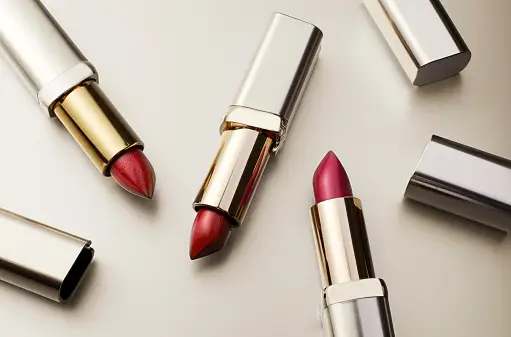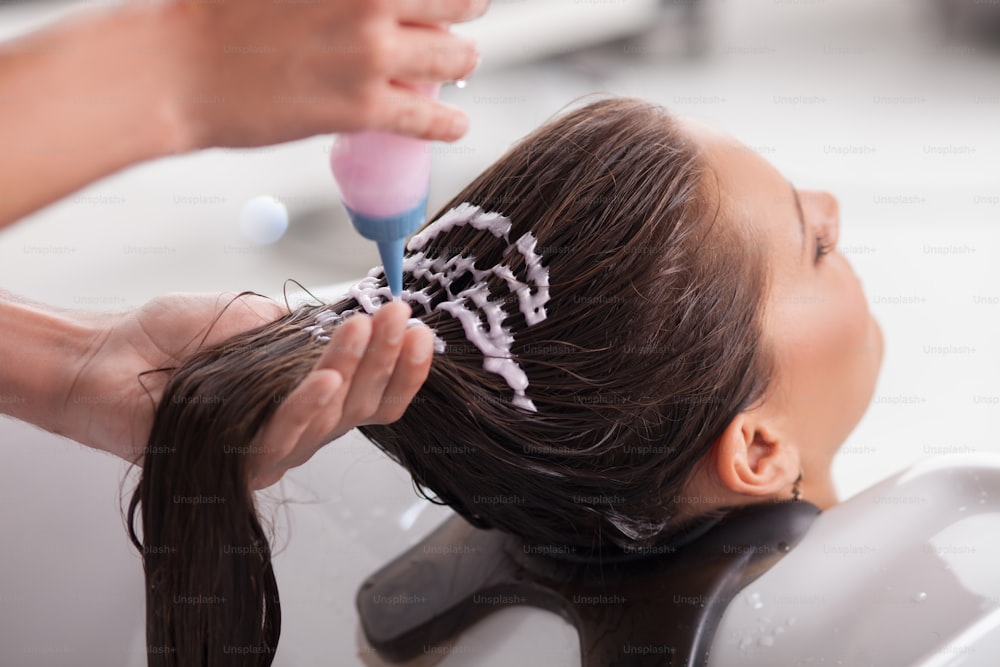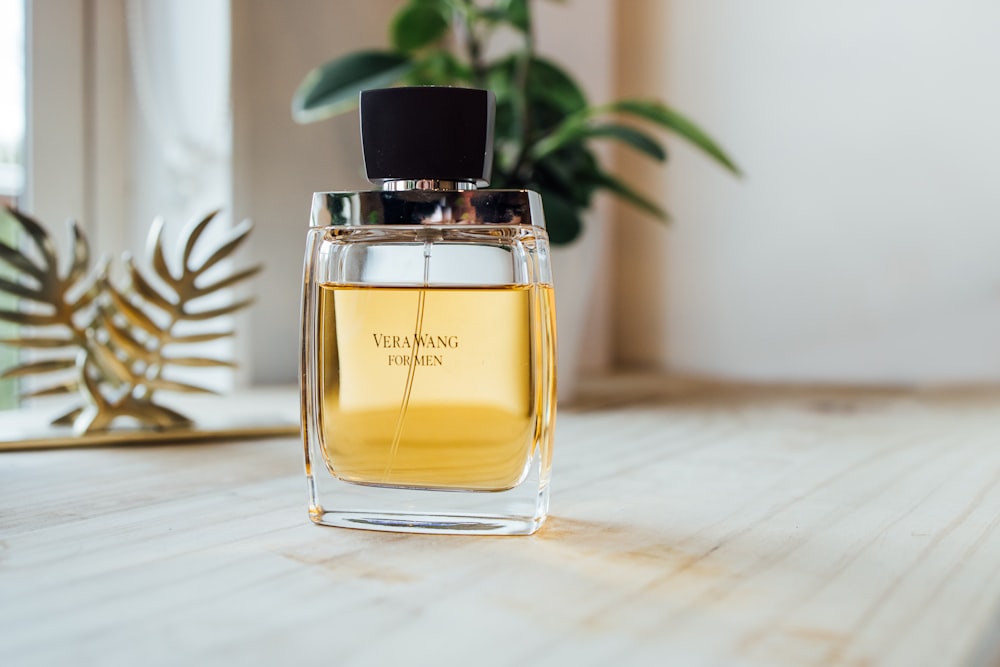Since time immemorial, people have celebrated the trend of adorning and decorating themselves. This practice often arises from a desire to improve upon perceived physical flaws or enhance one’s natural beauty. Cosmetics serve as tools to fulfill these psychological needs.
Although applying various cosmetics can bring a radiant glow to the face, boosting individuals’ confidence as they feel beautiful, the hidden ingredients within these beauty products can diminish environmental brilliance and lead to associated health issues.
Cosmetics include lipsticks, creams, powders, lotions, nail polish, shampoos, mascara, perfumes, etc. People of all ages and spheres widely use them.

Hair Dye
Brittany Murphy has addressed the prominence of hair dyes well, saying, “If you can’t change your surroundings, change your hair color.”
We’re often in the habit of changing hair color according to our needs and mental state. Now, let’s delve into the hidden chemistry of hair dyes, clearly mentioning the associated adversity.
Coal tar, a mixture of chemicals derived from petroleum, is also used to generate cosmetics colors with a five-digit Colour Index (CI) number. The particular coal tar dye commonly used in hair dyes is p-phenylenediamine. The color concentration of the hair dye is proportional to the ratio of phenylenediamine used.
According to the European Union, p-phenylenediamine is categorized as toxic and is fatal to aquatic organisms, causing appalling effects in the marine environment. It is known to be carcinogenic and is reported to cause pharyngeal irritation, asthma complications, and dermatitis. Other coal tar colors are also categorized as cancer-causing agents.
Besides the main constituent, p-phenylenediamine, other dyeing agents adversely affect human health. P-aminophenol aggravates asthma, causes eye and skin issues, and promotes methemoglobinemia.
The dye 4,5-diaminopyrazole poses eye damage and skin allergies. Pyrimidine causes eye issues and dermatitis. Resorcinol promotes problems in the eyes, skin, and respiratory system.
Moreover, drowsiness and dizziness are related concerns with using hair dyes, which have this component in their composition. Meta-aminophenol triggers skin sensitization, and meta-phenylenediamine causes eye and skin concerns.
It also affects the kidneys and blood, leading to renal failure and methemoglobin formation. Pyridine, when part of hair dye, initiates irritation of the eyes, skin, and respiratory system and poses dizziness. Toluene-2,5-diamine induces pro- and anti-inflammatory responses.
The presence of aluminum compounds and other heavy metals is harmful to the brain. Many dyes lack approval as food additives, yet they are still included in lipstick compositions.
Long-term use of hair dyes can lead to developing non-Hodgkin’s lymphoma in women. In one research study on hair dye reactions conducted in India with 110 volunteers, individuals suffered from headaches (63 percent) and itching (38 percent).

Lipstick
The most common cosmetic type to be used is lipstick, whether the lady is a makeup person or not; it is the minimum possible make-over done daily, especially by working ladies.
Toxic elements such as Al, Cd, Co, Cr, Cu, Fe, Mn, Ni, Pb, Sb, and Zn are found in lipsticks in excess. Some of these metals are not easily decomposed in landfills, causing pollution. The health impacts of these heavy metals are immense, and the longer the exposure time, the greater the seriousness of the side effects.
Aluminum— Gene alterations, oxidative stress, and breast cysts. Cadmium— Skin bruises, renal failures, chronic rhinitis, and oseotoxicities. Chromium— Carcinogenic and asthma inducer. Nickel— Respiratory, reproductive, renal disorders, and carcinogenic effects.
Other chemicals found in lipstick compositions include polymethylmethacrylate, methylparaben, polyparaben, retinyl palmitate, dyes, tocopheryl acetate, lead, propylene glycol, and methylparaben, which can cause allergies and cancers.
In an investigation, the inductively coupled plasma optical emission spectrometric method (ICP OES) was utilized to evaluate the presence of eleven harmful elements (Al, Cd, Cr, Co, Cu, Ni, Pb, Fe, Sb, Mn, and Zn) in fourteen lipstick samples. The hazard index (HI), hazard quotient (HQ), and average daily intake (ADD) were computed to determine the health risk assessment. Iron (Fe) had the greatest mean ADD value, while cobalt (Co) had the lowest.

Shampoo
The shampoo is essential to our daily lives. As Rory Power rightly said, “Even when there’s no bread, there’s always shampoo.”
The care and treatment of hair and scalp conditions often involve shampoo as a common practice. Soap was the only available hair cleanser until the first non-alkaline shampoo was introduced in 1933.
The main environmental concern with shampoos is their biodegradation of surfactant content. As it is discharged in much smaller amounts than detergents, it is often ignored and expected to cause no irreversible environmental harm.
However, some shampoo ingredients, such as coal tar, formaldehyde, halogenated aromatics, and musk, have been addressed as impacting the environment and health.
Amongst the various parameters measuring shampoo safety, aquatic toxicity and biodegradability hold prime value. The active ingredients in shampoo, such as sodium lauryl sulfate, resorcinol, parabens, triclosan, and dioxane, have been reported to pose irritation and eye damage concerns.

Nail Polish
The beauty of hands is glorified through multifarious nail colors, and a complete makeup package never goes without it.
The leached and solubilized extracts from nail polishes are investigated to be mutagenic and cytotoxic for humans, and a much-pronounced effect is observed for the solubilized extract. The nail paint extracts pose alarming risks to the aquatic environment as they are studied to be acutely toxic for zebrafish embryos.
It is unknown how much of the chemicals released from nail polish disposal currently exist in the environment. Therefore, the improper disposal of nail polish may pose risks to human and environmental health.
Many chemicals in nail polish bottles, namely phthalates, xylene, acetates, formaldehyde, camphor, etc., may induce reproductive system disorders.

Perfumes
Maurice Rousel once said, “Your fragrance is your message, your scented slogan.” People of all ages love a well-scented and fragrant environment. The smell of flowers, fresh grass, and aromas of all kinds, both natural and artificial, adorn individuals’ aesthetics.
Fragrances are much-overlooked pollutants, though they accumulate in the food chain through water. Once fragrance molecules mix with other pollutants already in the air, they form irritating and allergic substances, such as peroxides and inflammatory substances, causing asthma and related problems. The respirable particles have a size range of 10 µm or less. With the addition of D-limonene in the office, the size of the molecule increases to 100 times due to accumulation.
The decomposition of musk compounds takes time in the aquatic environment. They function as organic pollutants by accumulating in the tissues of fish. The constituents of prime value in fragrance manufacturing are benzaldehyde, acetone, ethanol, formaldehyde, phthalates, linalool, camphor, and many more, which cause serious health concerns like kidney damage and irritation in various body parts.
Other harmful Cosmetics
The contents of hairspray are liable to contribute to ozone depletion. They can cause hormonal disruptions and allergies in human beings. Triclosan, present in deodorant, resides on the water’s surface and harms aquatic organisms. All the ingredients can cause respiratory disorders, irritations, and headaches.
Blusher is dangerous to marine and aquatic organisms, with long-term side effects—the contents in the blusher cause irritations and hormonal imbalances. Face foundation contains carcinogenic ingredients, and its heavy metals are not biodegradable, leading to land pollution in landfills. The same issue applies to heavy metals, which are quite prominent in mascara and eyeliner.
The manufacturing processes involved in lotion generate significant pollution, and the lotion itself is non-biodegradable. Lotion may cause hormonal imbalances and irritations. Some sunscreen products are reported to affect coral reefs. The packaging waste of cosmetic products is a big challenge for many countries, posing many environmental issues.
Final Words
The idea of improving outward looks has been very well conceived by people of all ages around the globe. When people fight for the necessities of life, the beauty industry remains at its peak. Keeping our inner selves satisfied, we create many factors of dissatisfaction in the environment.
Moreover, temporary improvement of looks leads to long-term and permanent health setbacks. The importance of the musts cannot be addressed, yet careful and limited exposure to these would cater to the needs of personal and environmental levels.
References
- D.E. Rollison, K.J. Helzlsouer and S.M. Pinney, “Personal hair dye use and cancer: a systematic literature review and evaluation of exposure assessment in studies published since 1992.” Journal of Toxicology and Environmental Health Part B: Critical Review, 2006; 9(5): 493–500.
- Y. Zhang, “Personal use of hair dye and the risk of certain subtypes of non-Hodgkin lymphoma.” American Journal of Epidemiology, 2008; 167(11):1321– 1331.
- K. H. Kim, E. Kabir, E., S. A. Jahan, “The use of personal hair dye and its implications for human health.” Environment International, 2016; 89: 222-227.
- D. Patel, S. Narayana, B. Krishnaswamy, “Trends in use of hair Dye: a cross-sectional study.” Int. J. Trichol. 2013; 5: 140–143.
- J. Mrmošanin, A. Pavlović, S. Miti, S. Tošić, E. Pecev-Marinković, J. Krstić, M. Nikolić, “The evaluation of ICP OES for the Determination of potentially toxic elements in lipsticks: Health risk assessment.” Acta Chimica Slovenica 2019; 66 (4): 802-813.
- R. Kohli, A. Mittal, A. Mittal, “Adverse effects of Cosmetics on the Women Health.” In BIO Web of Conferences. EDP Sciences. 2024; 86: 01026.
- C.C. Urbano, “50 years of hair care development.” Cosmet Toiletries, 1995; 110: 85–104.
- R. M. Trüeb, “Shampoos: ingredients, efficacy, and adverse effects.” JDDG: Journal der Deutschen Dermatologischen Gesellschaft, 2007; 5 (5): 356-365.
- I. Felzenszwalb, A. D. S. Fernandes, L. B. Brito, G. A. R. Oliveira, P. A. S. Silva, M. E. Arcanjo, E. R. A. Ferraz, “Toxicological evaluation of nail polish waste discarded in the environment.” Environmental Science and Pollution Research, 2019; 26, 27590-27603.
- B. Bridges, “Fragrance: emerging health and environmental concerns.” Flavor and fragrance journal, 2002; 17 (5), 361-371.
Also, Read: Pakistan’s Maritime Department: A promising future for the country

Syeda Khair-ul-Bariyah has been associated with teaching since 2007. She is a synthetic organic chemist and a science and fiction writer. She has publications in both national and international journals in the field of Chemistry. Moreover, she is the author of a stage playbook, “Peregrination of the Soul,” and has a couple of articles and poems published on various websites.

